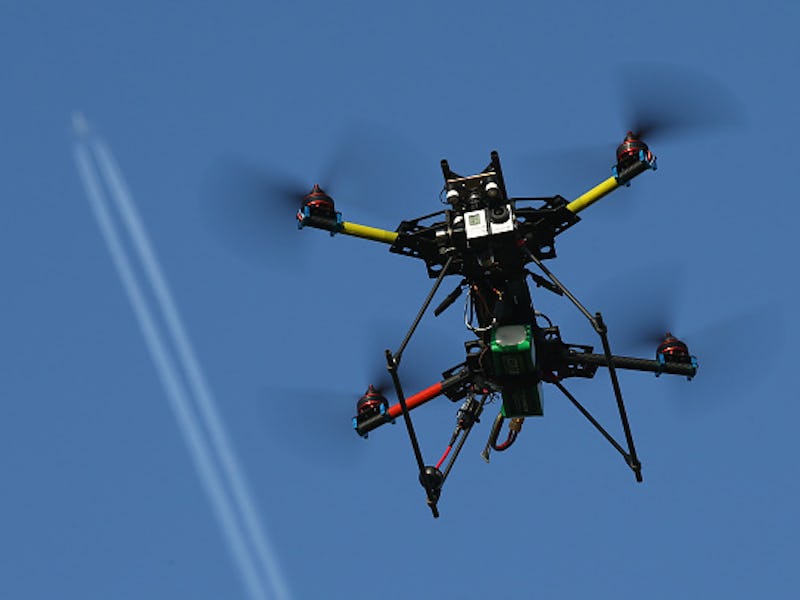Are Drones Really a "Growing Threat to Safety"?
Will drones bring catastrophe along with pizza?

Though they might number in the millions, quadcopters and drones remain a mystery to some: The Federal Aviation Administration reports 300,000 registered drone owners, but just how many drones hover over America? (We don’t know.) How will we use them? (We have some ideas.) When drone pilots lose control of their unmanned vehicles, either through malfunction or ineptitude, and the machines careen into planes full of people, what’s the damage? (We also don’t know.) The International Air Transport Association, the aviation trade group that wants to standardize overhead bin sizes, is particularly worried about the latter.
Speaking at a conference prior to the Singapore Airshow on Monday, IATA director Tony Tyler described drones as a “real and growing threat to the safety of civilian aircraft.” Tyler called for a “sensible approach to regulation” that will bridge the gap between today’s skies — which, as the IATA paints them, are buzzing with close calls — to a future where he can safely buy “pizza delivered by a drone.”
This isn’t to say that the average drone pilot is malicious: The community is just concerned that a few bad actors have unfairly tarnished UAVs as unmanned menaces. Even people arrested for flying drones into, say, the Empire State Building, might just be ignorant of the regulations or common sense (don’t fly drones in the middle of a crowded city!). The IATA cites a Bard College report of 921 “incidents” over two years, a third of which the analysts describe as “close encounters.” The remainder were “sightings,” though aircrafts spotted most drones above the 400-foot regulatory threshold.
But what happens when the close encounters get a bit more intimate? As of now, there are neither confirmed reports of UAV collisions nor engineering demonstrations (unlike manufacturers do with ice and birds). Last October, however, Virginia Tech engineers modeled a jet engine sucking in a wayward drone, and the results weren’t pretty. It remains to be seen whether regulation, like FAA’s, or technology, such as locking drones out of jet airspace, will keep the IATA’s grim omens from coming to pass.